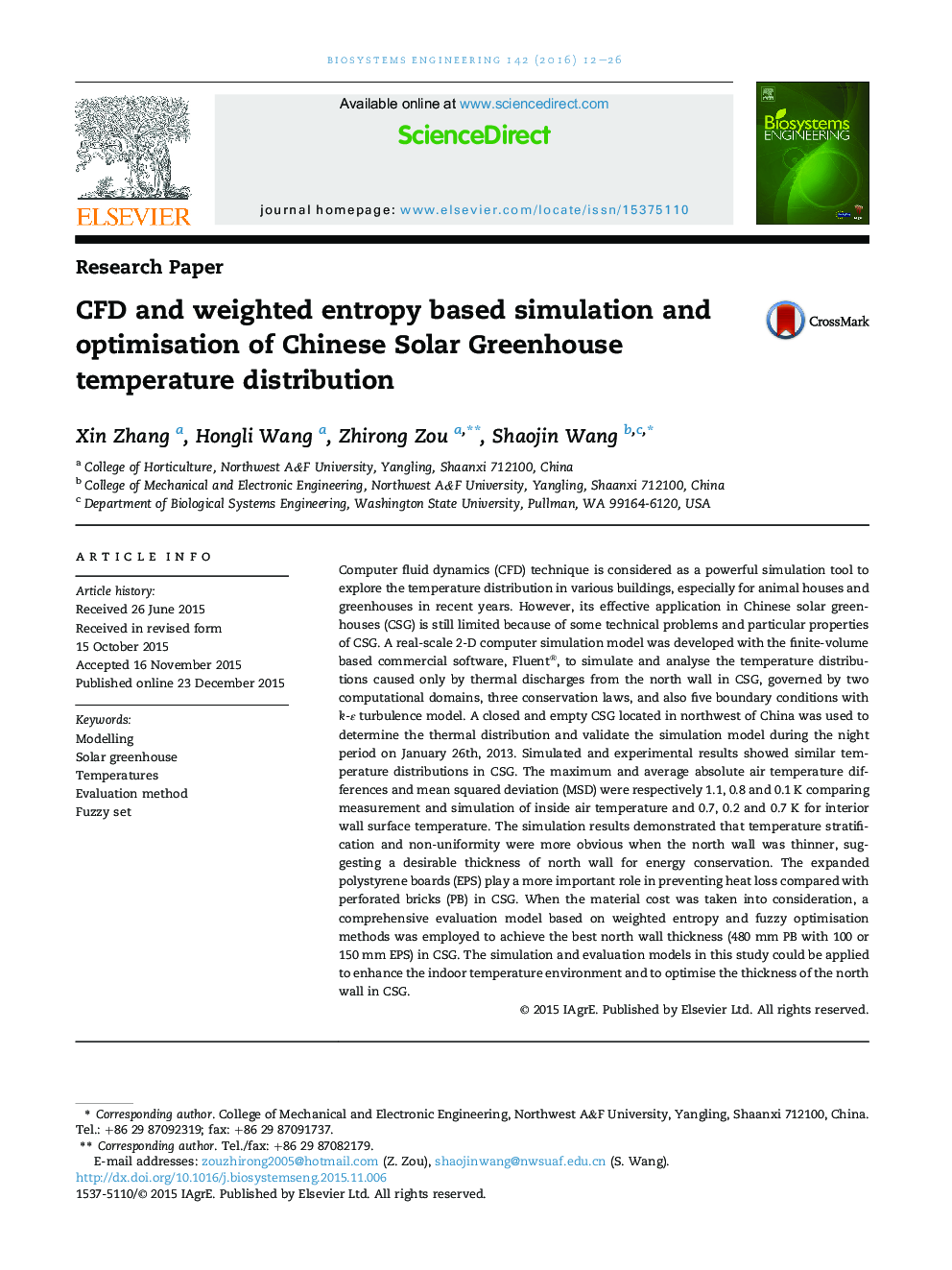| کد مقاله | کد نشریه | سال انتشار | مقاله انگلیسی | نسخه تمام متن |
|---|---|---|---|---|
| 1710892 | 1519519 | 2016 | 15 صفحه PDF | دانلود رایگان |

• CFD model was developed to analyse temperature distributions in CSG during night.
• A closed and empty CSG in Northwest China was used to validate simulation model.
• Temperature non-uniformity was observed when north wall thickness was thin.
• Weighted entropy methods were used to achieve the best CSG north wall thickness.
Computer fluid dynamics (CFD) technique is considered as a powerful simulation tool to explore the temperature distribution in various buildings, especially for animal houses and greenhouses in recent years. However, its effective application in Chinese solar greenhouses (CSG) is still limited because of some technical problems and particular properties of CSG. A real-scale 2-D computer simulation model was developed with the finite-volume based commercial software, Fluent®, to simulate and analyse the temperature distributions caused only by thermal discharges from the north wall in CSG, governed by two computational domains, three conservation laws, and also five boundary conditions with k-ε turbulence model. A closed and empty CSG located in northwest of China was used to determine the thermal distribution and validate the simulation model during the night period on January 26th, 2013. Simulated and experimental results showed similar temperature distributions in CSG. The maximum and average absolute air temperature differences and mean squared deviation (MSD) were respectively 1.1, 0.8 and 0.1 K comparing measurement and simulation of inside air temperature and 0.7, 0.2 and 0.7 K for interior wall surface temperature. The simulation results demonstrated that temperature stratification and non-uniformity were more obvious when the north wall was thinner, suggesting a desirable thickness of north wall for energy conservation. The expanded polystyrene boards (EPS) play a more important role in preventing heat loss compared with perforated bricks (PB) in CSG. When the material cost was taken into consideration, a comprehensive evaluation model based on weighted entropy and fuzzy optimisation methods was employed to achieve the best north wall thickness (480 mm PB with 100 or 150 mm EPS) in CSG. The simulation and evaluation models in this study could be applied to enhance the indoor temperature environment and to optimise the thickness of the north wall in CSG.
Journal: Biosystems Engineering - Volume 142, February 2016, Pages 12–26